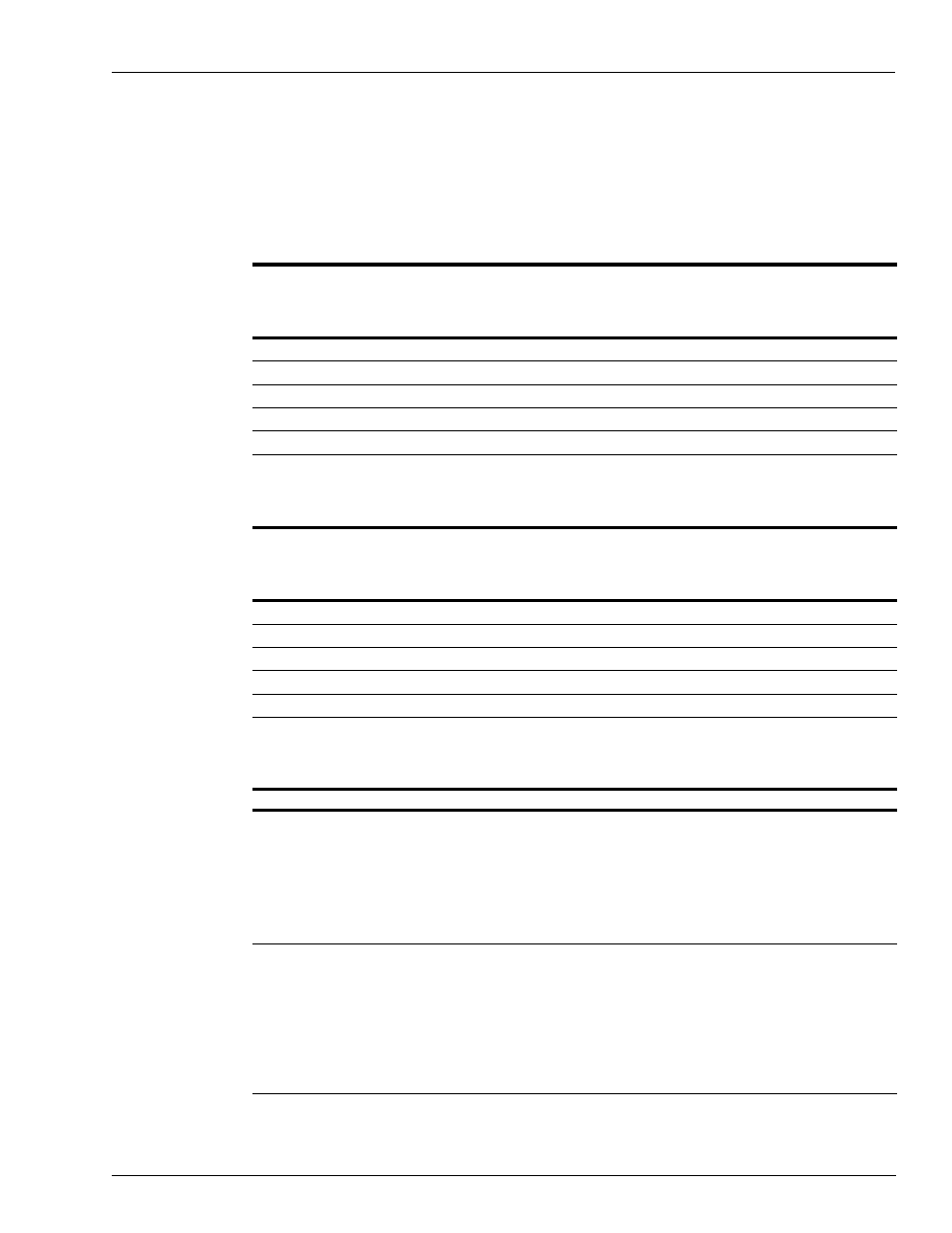Compare readings with, Acceptable range tables, Acceptable ranges - metric measure – Gasboy Atlas Start-up User Manual
Page 141: Probable causes of low flow rate for pumps

MDE-4334D Atlas™ Start-up and Service Manual · July 2013
Page 6-21
Measuring Pressure and Vacuum
Hydraulic/Mechanical Components
Acceptable Range Tables
The values listed in the following tables are approximate and may vary depending on site
conditions, the hanging hardware used, age of units, and other factors. Flow rate for a standard
gallonage is based on 5/8-inch hoses, 3/4-inch swivels, and unleaded gas. Flow rate for high
gallonage is based on 1-inch hoses and OPW7H Nozzle.
Acceptable Ranges (Pumps) - Standard and High Flow Rate Units
Full Flow - All Nozzles Open
By-pass - Nozzles Closed
Pump Configuration
Inlet
Vacuum
(in hg)
Discharge
Pressure
(in psi)
Flow Rate
(gpm)
Inlet Vacuum
(in hg)
Discharge
Pressure.
(in psi)
One Pumping Unit per Hose:
Standard Flow
4 - 10
15 - 30
10 - 13
4 - 7
20 - 35
High Flow
6 - 12
25 - 40
18 - 24
5 - 8
28 - 45
One Pump Unit per Two Hoses:
Standard Flow
4 - 10
20 - 35
17 - 20
4 - 7
22 - 38
Acceptable Ranges - Metric Measure
Note: This range is for both hoses running.
Full Flow - All Nozzles Open
By-Pass - Nozzles Closed
Pump Configuration
Inlet
Vacuum
(cmhg)
Discharge
Pressure bar Flow Rate ipm
Inlet Vacuum
cmhg
Discharge
Pressure bar
One Pumping Unit per Hose:
Standard Flow
10.2 - 25.4
1.0 - 2.1
37 - 50
10.2 - 17.8
1.3 - 2.4
High Flow
15.2 - 30.5
1.7 - 2.8
68 - 90
12.7 - 20.3
1.9 - 3.1
One Pump Unit per Two Hoses:
Standard Flow
10.2 - 25.4
1.3 - 2.4
64 - 76
10.2 - 17.8
1.5 - 2.6
Probable Causes of Low Flow Rate for Pumps
Use the following table to determine the causes of low flow rate:
Low Flow Rate Symptom
Probable Causes
The open nozzle vacuum reads high,
pressure reads low, and closed nozzle
pressure is normal.
• Check valve sticking, closed, or partially closed
• Pumping unit strainer dirty
• Supply line obstructed or restricted
• Spring loaded check valve in supply line
• Storage tank air vent plugged
• Undersized supply line for unit
• Tank too far or too deep (no further than 50’ away and 10’ deep)
• Vapor lock (very low to no flow)
The open nozzle vacuum reads low or
normal, pressure reads high, and closed
nozzle pressure is normal.
• Hose crushed
• Nozzle defective
• Meter binding
• Discharge piping obstructed
• Filter dirty
• Bypass valve defective or sticking
• Regulator or check relief valve defective or sticking
• Solenoid valve defective
• Meter check valve defective or sticking
